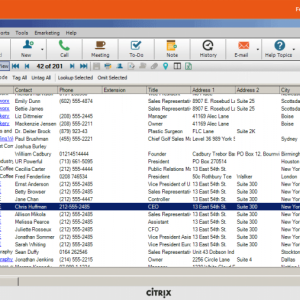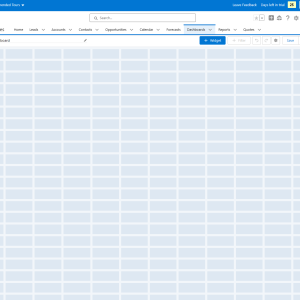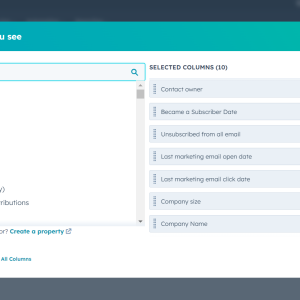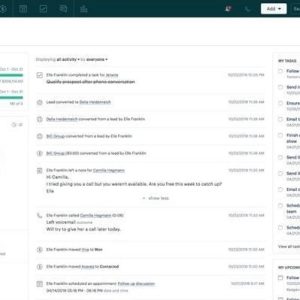A sales forecast is a crucial component of any business plan, as it provides an estimate of the future revenue and sales performance of a company. It involves analyzing historical sales data, market trends, and other relevant factors to predict the potential sales for a specific period, typically a year. A sales forecast helps businesses make informed decisions regarding production, marketing, and resource allocation, enabling them to set realistic goals and budgets. By understanding the demand for their products or services, companies can adapt their strategies to maximize sales and achieve sustainable growth. In this article, we will explore the concept of sales forecasting in detail, discussing its importance, methods, and potential challenges.
Understanding the wide world of business and sales is no easy feat, but we’re here to help as much as possible. Sales forecasts are analytic reports that detail a business’s projected sales for the foreseeable future. By analyzing data, such as current clients, previous sales, and market conditions, these forecasts can help manage expectations and inform decisions at the business in question.
You are viewing: What Is a Sales Forecast?
In this guide, we’ll answer all your questions about sales forecasts, including what they are, who uses them, when you should use them, how to use them, and why you might need to take advantage of them.
In this guide:
What Is a Sales Forecast?
A sales forecast is a projection of future sales revenue. It is an estimate of how much a company expects to sell in a given time period, such as a month, quarter, or year. Sales forecasts are used to help businesses make decisions about budgeting, inventory, and staffing.
In fact, when you really break it down, a sales forecast primarily focuses on these two factors more than anything: the amount of money you can expect and the amount of time you can expect it in. This is how much money you are going to make in a given time period.
A lot goes into deciding those two factors, though. Here’s a list of some metrics you might have to consider when setting up your sales forecast:
- Leads and prospects – The number of contacts you have that are likely to turn into sales in the near future.
- Past sales revenue – The number of sales you made in the same time period previously.
- Market fluctuations – The health and prosperity of the current economy in your industry.
- Seasonal timing – The time of year that your sales forecast will take place.
- Pricing information – The cost changes that may have happened recently for your business.
- Sales opportunities – The potential events that could help boost sales for your business.
Also, let’s be clear from the start: sales forecasts are not a perfect science. While some of the data used to create these forecasts are objective facts, like interest rates, a lot of the data is pure conjecture, which means it could get it wrong. In fact, 93% of sales leaders have trouble accurately forecasting sales within 5% of the actual total.
Given that information, it’s important to remember the value of flexibility when it comes to sales forecasting. Don’t allow a bad quarter to redefine your company strategy and don’t let one good quarter cement a potential lackluster plan. Sometimes, adjusting the sales forecast to more accurately reflect your successes and failures is more sensible than the alternative.
Still, some potentially incorrect data is infinitely more valuable than no data at all, which is why we’d recommend considering a sales forecast, even if you’re skeptical.
Who Uses Sales Forecasts?
See more : Best Lead Management Software 2023
For starters, sales forecasts are only necessary for businesses in the sales industry. If you aren’t selling anything, it’s likely that you don’t need to invest in sales forecasting at your business.
For businesses that do sell something, sales forecasting is quite common. In earnest, the majority of larger businesses are using some kind of sales forecast to project revenue and manage expectations for the future. Companies like Vonage, PayPal, T-Mobile, and IBM, for example, utilize Salesforce, a popular customer relationship management (CRM) software to aggregate data and create in-depth reports and sales dashboards that project and analyze their sales revenue.
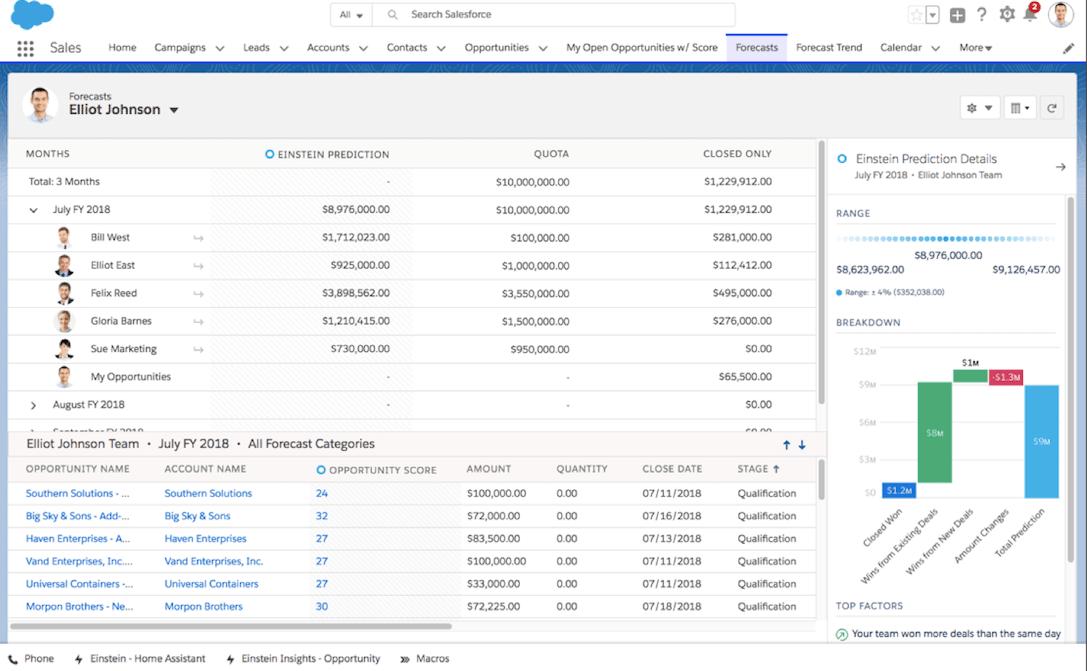
Admittedly, though, it may feel like only big business need sales forecasts. After all, a small business doesn’t really need access to actionable data sets of sales interactions to predict how the market will react to your strategy, right? Wrong!
The reality is that a sales forecasts are valuable to any sized business – as long as you can ensure that they are accurate for your team, and affordable for your budget.
In fact, given that small businesses are more at the whim of fluctuating markets, price changes, and the status of leads, one could argue that sales forecasts are more important for small businesses. With generally smaller budgets, every dollar will count, so knowing whether or not you’ll have more or less cash could help you go from startup to enterprise.
Why Is Sales Forecasting Important?
Sales forecasting is important for businesses of all sizes, because it allows you to manage your expectations for the coming week, month, or year. When it comes to setting your budget, hiring new employees, and generally investing (or devesting) in your company, knowing how much revenue is coming can make life a lot easier.
The global pandemic provided the perfect opportunity to explain why sales forecasting is so important. If a gym, for example, didn’t do any sales forecasting in March 2020 and continued to maintain the same operating hours, bolstered their class offerings, and started a CPR training course, they’d likely be out of business before the end of the month.
However, if that gym had done some sales forecasting in March 2020, they would realize that membership and class participation numbers were likely to drop like a stone, and they could find ways to cut costs and survive through the pandemic.
Suffice to say, more data is always better than less data, and sales forecasting is a way to ensure that you have all the actionable information you need to make the right decision for your business in regard to sales.
How Can You Use Sales Forecasts?
If you have a rockstar team of top-tier engineers and data analysts who can put together a comprehensive sales forecast that you’re sure is accurate and complete, then get on that as soon as possible.
See more : Less Annoying CRM Review 2023 – Pros, Cons, Pricing & More
However, if you can’t dedicate that level of time and resources to sales forecasting, you might want to leave it to the professionals. After all, an incorrect sales forecast could spell trouble down the line, and you don’t want to have to worry about where you get your data from.
Sales Forecast Templates
A good way to get started with sales forecasting – that doesn’t involve starting from scratch – is with sales forecast templates. These predesigned reports can give you the foundation of a rock-solid sales forecast, so you can just input your data and get the information you need about projected sales in the near future.
There are typically five stages of a sales forecast that you can follow to get the information you need:
- Define the problem
- Gather information
- Narrow down data
- Find a fitting template
- Input data into template
CRM with Sales Forecasting Features
Customer relationship management (CRM) software can sometimes include the ability to create sales forecasts for you. We’ve done some research in the industry and found that there are three CRM software providers that fit the description:
Salesforce – Best for sales analytics
If you’re in the market for a CRM, you’ve no doubt heard of Salesforce. This popular CRM offers some of the best sales forecasting on the market, with the ability to build in-depth dashboards from your sales data. More importantly, Salesforce offers this feature across all of its pricing plans in the Sales Cloud, so you can get access to sales forecasting for only $25 per user, per month.
Check out our Salesforce pricing guide for more information
HubSpot – Best for growing businesses
HubSpot is another big name in the CRM game, perhaps because it’s one of the few that also offers robust analytics, including sales forecasting functionality. However, while HubSpot does have a surprisingly solid free plan, sales forecasting features are only available with the Professional and Enterprise plans, so you’ll have to pay at least $90 per user, per month to get access.
Check out our HubSpot pricing guide for more information
Pipedrive – Best for automation
While not as prominent as the other two options on this list, Pipedrive still represents an excellent choice for growing businesses, particularly those that are interested in sales forecasting. Pipedrive’s starting price is low, but sales forecasting is relegated to the Professional and Enterprise plans, which means a minimum cost of $49.90 per user, per month to do so.
Check out our Pipedrive pricing guide for more information
That’s a wrap on “ What Is a Sales Forecast? ” We hope you’ve found a trove of useful insights and fresh perspectives. Your opinions and ideas matter to us—join the conversation below and share your take! Hungry for more tech insights? Dive into our diverse collection of articles where innovation meets practicality. Discover More CRM Softwares.
Stay in the loop with the latest in AI and tech – your journey into the digital future continues at wubeedu.com.
#Sales #Forecast
Source: https://wubeedu.com
Category: CRM
